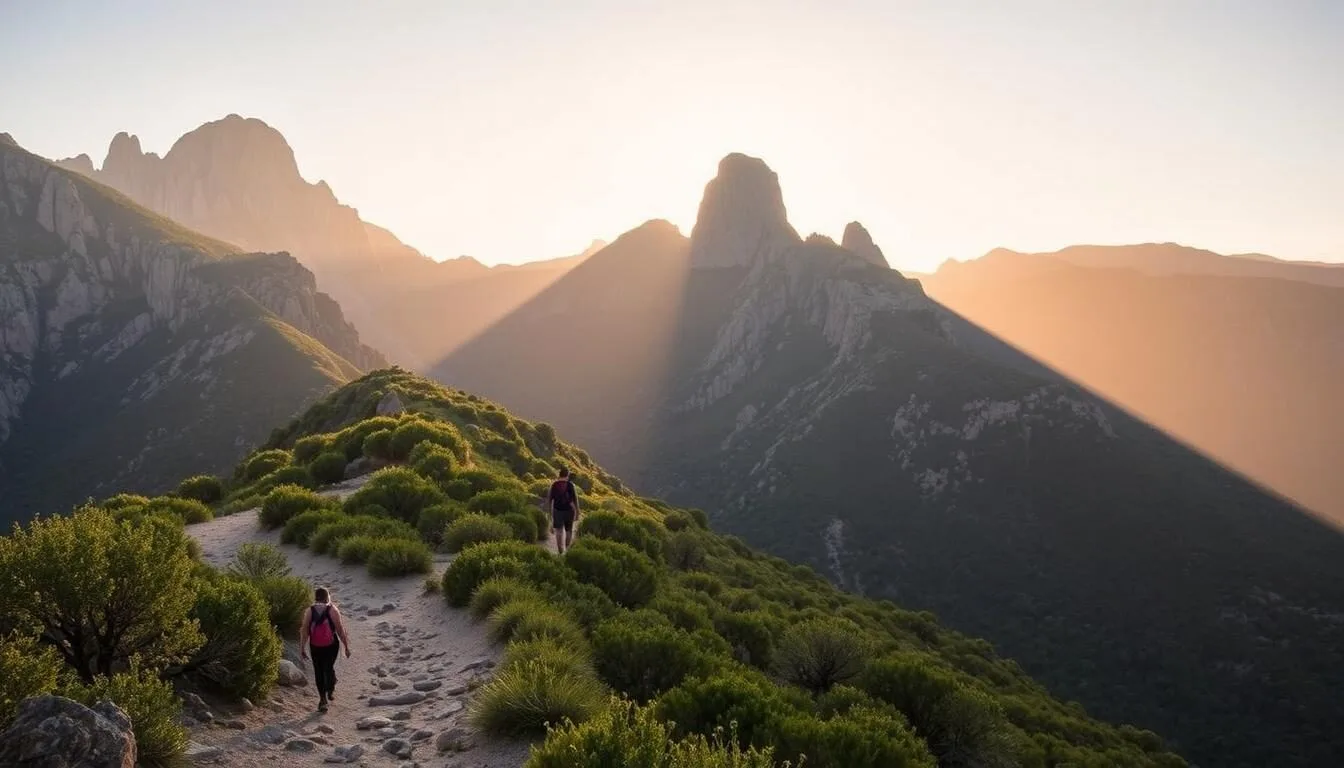Nestled in the remote corners of west Texas, Guadalupe Mountains National Park is a treasure trove of natural wonders waiting to be explored. With its diverse ecosystems, ranging from desert floors to forested mountains, this park offers a unique blend of solitude and wilderness experiences.
As you venture into this stunning park, you’ll have the opportunity to hike to the highest point in Texas, explore lush canyons, and discover the world’s largest Permian fossil reef, dating back nearly 300 million years. With a wide range of hiking trails, you can choose from easy day trips to multi-day adventures, making the most of your time in this remarkable national park.
Discovering the Hidden Gem of West Texas
Tucked away in West Texas, Guadalupe Mountains National Park is a hidden gem waiting to be explored. This unique destination offers a blend of natural beauty and geological significance that sets it apart from other national parks.
Park Overview and Geography
The Guadalupe Mountains get their name from the Guadalupian series in the Permian period, a time that dates back nearly 300 million years. The park preserves the world’s largest Permian fossil reef, a geological treasure that offers insights into Earth’s ancient past. The dramatic changes in elevation within the park create distinct ecological zones, supporting a wide range of flora and fauna across its varied landscapes.
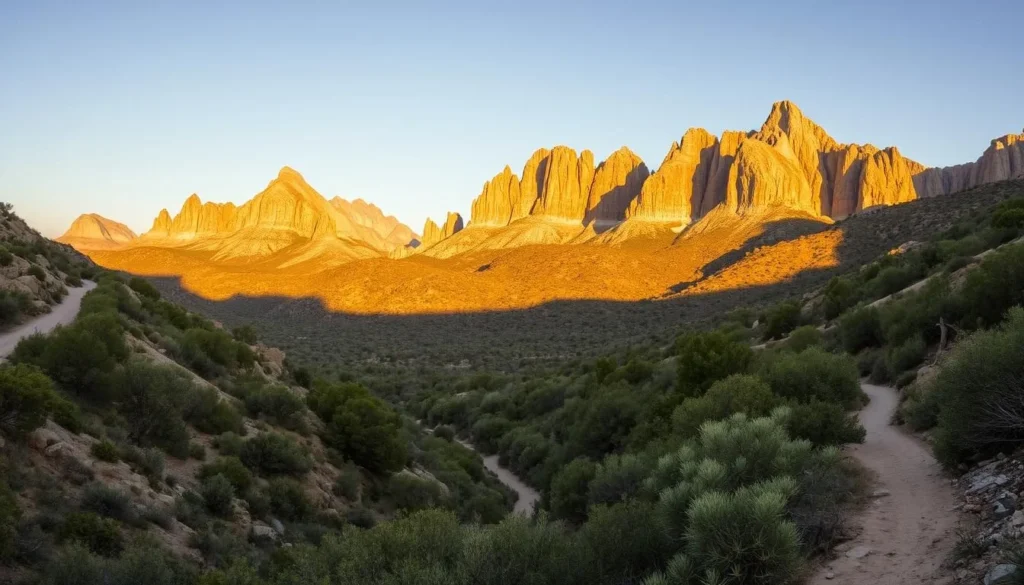
What Makes Guadalupe Mountains National Park Special
Guadalupe Mountains National Park remains refreshingly uncrowded, with only about 230,000 visitors in 2023, making it the 12th least visited national park. The park’s unique features include its remarkable biodiversity, with over 1,000 species of plants, 60 species of mammals, 289 species of birds, and 55 species of reptiles. The park’s remote location results in exceptionally dark night skies, making it a premier destination for stargazing and astrophotography enthusiasts. Visitors can enjoy hiking trails that offer breathtaking views of the surrounding landscape.
The park’s diverse elevations and ecosystems support a wide range of wildlife and offer numerous opportunities for exploration and discovery. Whether you’re interested in trails that wind through the mountains or simply taking in the panoramic views, Guadalupe Mountains National Park has something for everyone.
Planning Your Visit to Guadalupe Mountains National Park
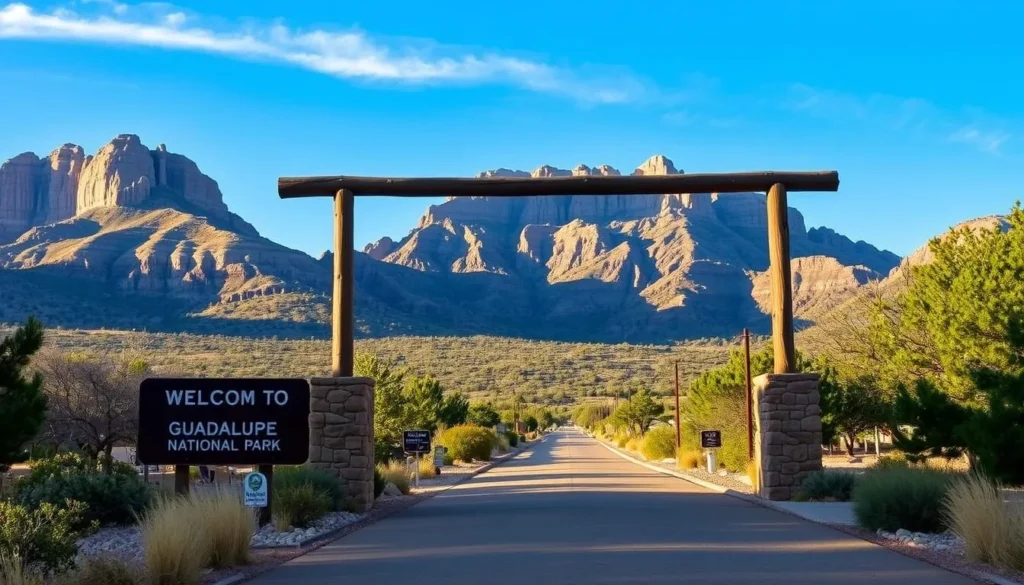
Planning a trip to Guadalupe Mountains National Park requires some preparation to make the most of your visit. The park offers a unique blend of natural beauty and adventure, but it’s crucial to be prepared.
Best Time to Visit
The best time to visit Guadalupe Mountains National Park is from October to April when the weather is mild and ideal for hiking and exploring the trails. Summer months can be extremely hot, especially at lower elevations.
Getting There and Park Entrances
The park is accessible via U.S. Highway 62/180, and there are multiple entrances. The main entrance is at Pine Springs, which is also the location of the visitor center. Be aware that there are no gas stations or stores within the park, so plan accordingly.
Entrance Fees and Operating Hours
The park operates on Mountain Time, and entrance fees apply. The park is generally open 24/7, but the visitor center has specific hours. It’s essential to check the official park website for the most up-to-date information on fees and hours.
Essential Tips Before You Go
Before visiting, ensure you have enough water, food, and gas. Cell phone service is limited, so download offline maps and inform someone of your hiking plans. Be prepared for changing weather conditions, especially at higher elevations.
By planning ahead and being aware of the park’s conditions, you can have a safe and enjoyable visit to Guadalupe Mountains National Park.
Hiking to Guadalupe Peak: Standing on the Top of Texas
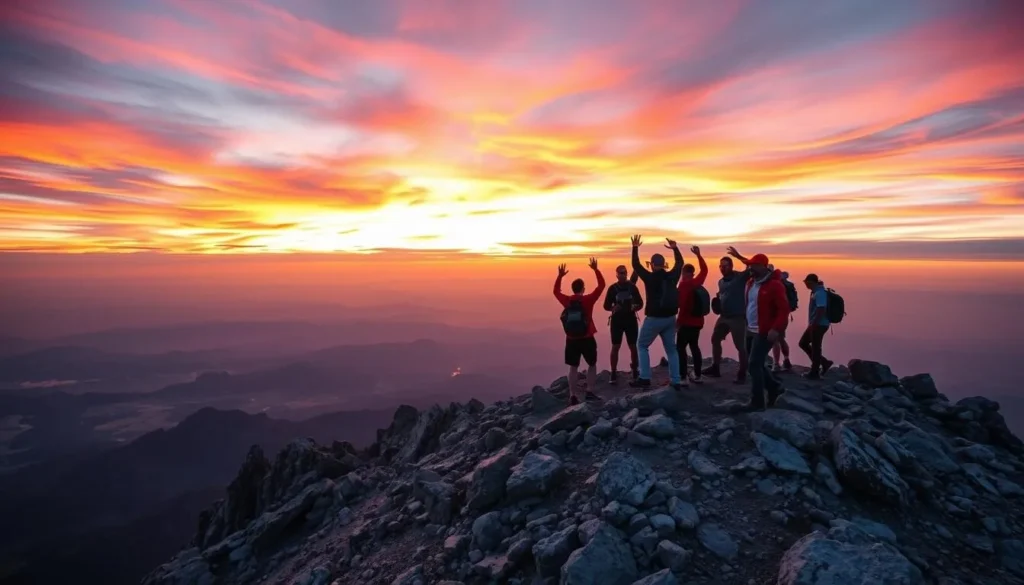
Guadalupe Peak, the highest point in Texas, beckons outdoor enthusiasts to test their limits. As part of the Guadalupe Mountains National Park, this challenging hike offers breathtaking views and an unforgettable experience.
Trail Details and Difficulty
The Guadalupe Peak trail is approximately 8.5 miles round trip with an elevation gain of over 3,000 feet. The difficulty varies based on conditions along the trail. If the wash is dry and you have experience with rock scrambling, this trail is considered moderately difficult and takes most people about 2 hours to ascend. However, if the wash is wet, the hike becomes much more challenging and longer.
The National Park Service advises against attempting this hike in wet or rainy conditions, especially during late-summer when rainy conditions are more likely.
What to Expect Along the Way
As you hike to Guadalupe Peak, you’ll encounter a variety of landscapes, from desert flora to pine forests at higher elevations. The trail features loose rocks, steep sections, and potentially slippery surfaces, especially after rain. It’s essential to be prepared for changing conditions and challenging terrain.
The views from the summit are spectacular, with panoramic vistas of the Guadalupe Mountains and surrounding landscape.
Tips for a Successful Summit
To ensure a successful and safe hike to Guadalupe Peak, consider the following tips:
- Start your hike early in the morning (ideally before 8:00 AM) to avoid afternoon heat and potential thunderstorms.
- Pack at least 3-4 liters of water per person, high-energy snacks, sun protection, and layers of clothing.
- Wear sturdy hiking boots with good ankle support and traction.
- Consider using trekking poles for added stability.
- Check the weather forecast specifically for mountain conditions before attempting this hike.
Exploring McKittrick Canyon: The Most Beautiful Spot in Texas
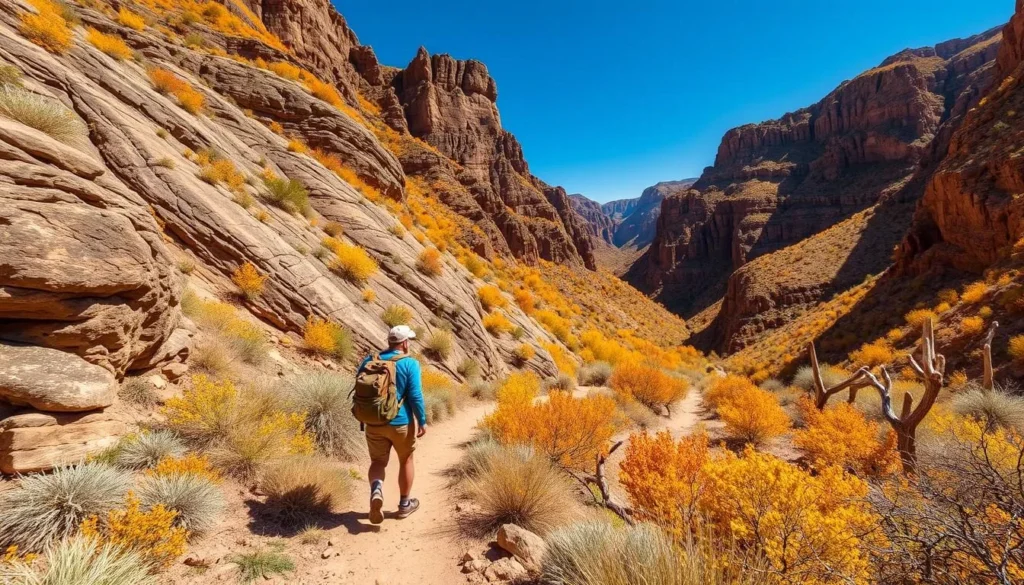
McKittrick Canyon, nestled within Guadalupe Mountains National Park, is a breathtaking destination that showcases the natural beauty of Texas. This scenic canyon offers a variety of trails for hikers of different skill levels, historic landmarks, and spectacular views that make it a must-visit location.
McKittrick Canyon Trail Options
The McKittrick Canyon Nature Trail is a popular choice, offering a loop that takes you through the heart of the canyon. This trail is known for its stunning fall colors when the bigtooth maple trees turn brilliant shades of red, orange, and gold. For more adventurous hikers, the trail continues beyond the loop, offering more challenging terrain and rewarding views of the surrounding mountains.
Trail conditions can vary, so it’s essential to check the park’s website or visitor center for the latest information before you hike McKittrick Canyon.
Pratt Cabin and the Grotto
One of the historic landmarks within McKittrick Canyon is Pratt Cabin, a testament to the area’s ranching history. The cabin, built in the 1930s, is a charming example of the rustic architecture of the time. Nearby, the Grotto is a natural limestone cave that provides a cool respite during the warmer months. Both sites are fascinating stops along the trail, offering insights into the natural and cultural history of the area.
Best Time to Visit McKittrick Canyon
The best time to visit McKittrick Canyon depends on your preferences. Fall is particularly spectacular, with the changing foliage creating a kaleidoscope of colors. Spring is another excellent season, with wildflowers in bloom and mild temperatures. Summer visits are best made early in the morning to avoid the heat, while winter offers a serene, quieter experience.
Regardless of when you visit, McKittrick Canyon is sure to leave a lasting impression with its natural beauty and diverse landscapes.
Devil’s Hall Trail: A Geological Wonder
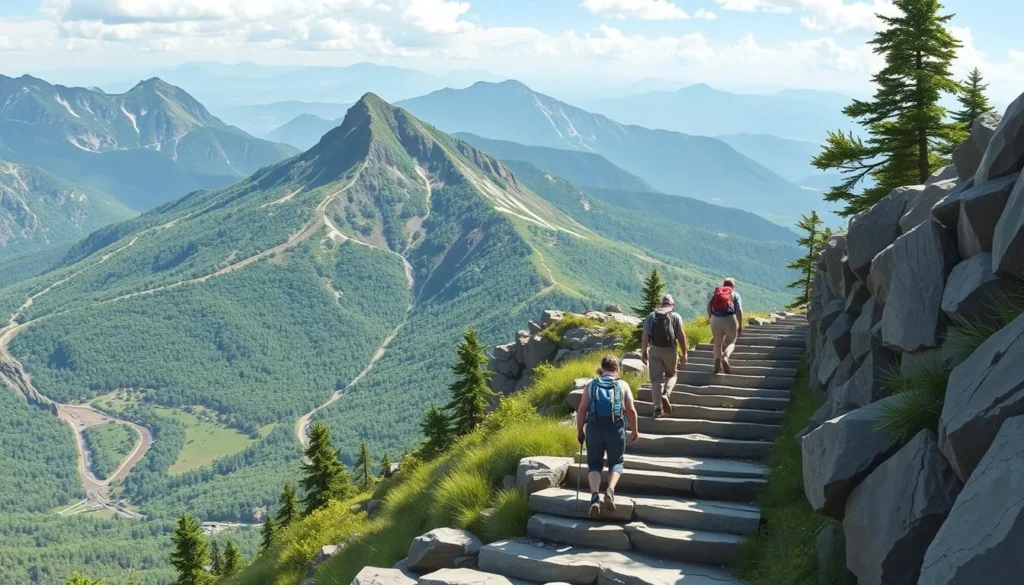
The Devil’s Hall Trail, located within Guadalupe Mountains National Park, offers an exhilarating hiking experience through a unique geological formation. This 4.2-mile out-and-back trail is known for its challenging terrain and breathtaking scenery.
Trail Description and Highlights
The Devil’s Hall Trail is a moderately difficult hike that takes you through a scenic canyon, culminating in the narrow passage known as Devil’s Hall. The trail’s highlight is the natural limestone “staircase” you’ll encounter about 1.75 miles into the hike. This unique formation requires some basic scrambling skills to navigate.
The trail features include the need to use your hands and feet to climb up and over the staircase formation, making it more adventurous than many other hikes in the park.
Rock Scrambling and Natural Staircase
Beyond the staircase, you’ll continue for another 5-10 minutes to reach the narrowest part of the canyon known as Devil’s Hall. The rock scrambling portions of this trail make it more exciting, but they don’t require technical climbing skills – just good balance, appropriate footwear, and a sense of adventure.
During and after rainy periods, be especially cautious as the wash can become slippery and potentially dangerous, with park rangers often advising against hiking this trail during wet conditions.
Guadalupe Mountains National Park, Texas: Best Things to Do – Top Picks for Families
When visiting Guadalupe Mountains National Park, Texas, with your family, there are numerous activities to enjoy together. The park offers a range of trails and attractions that are suitable for families with children, providing a great opportunity to explore and learn about nature and history.
Smith Spring and Manzanita Spring Loop Trail
The Smith Spring and Manzanita Spring Loop Trail is a great hiking option for families. This trail is known for its natural springs and scenic views. The loop trail allows you to explore the beautiful surroundings while enjoying the unique features of the park.
The trail is relatively easy, making it accessible for families with children. Along the way, you can observe the diverse flora and fauna, and the springs provide a serene spot to relax and enjoy the natural beauty.
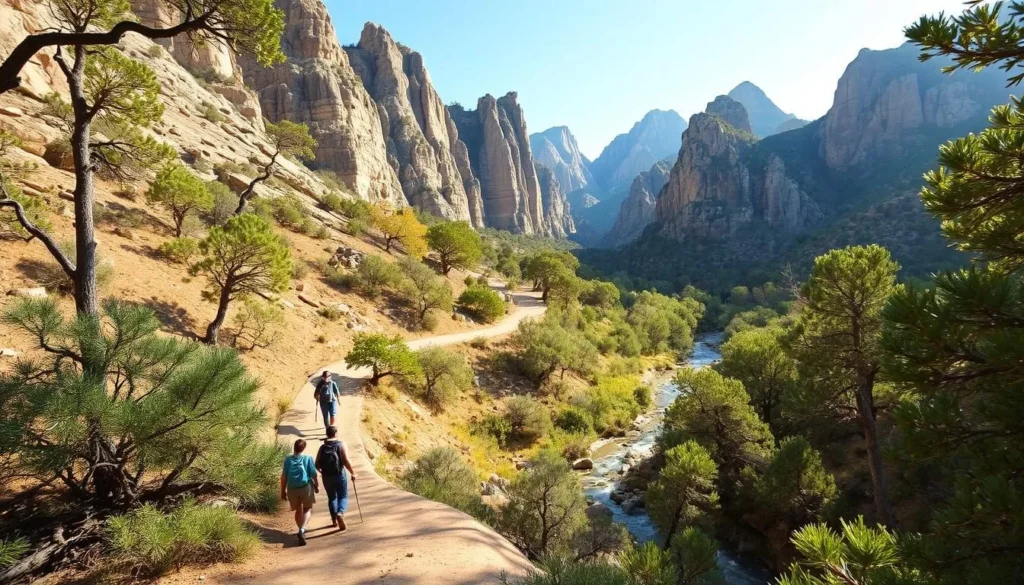
Pinery Nature Trail and Historic Station
The Pinery Nature Trail is a 0.9-mile paved loop that’s perfect for families, especially those with small children or visitors with mobility issues. Starting behind the Pine Springs Visitor Center, this trail is not only easy to navigate but also rich in historical and ecological significance.
- The trail features interpretive signs that identify desert plants and explain their ecological importance.
- It leads to the ruins of the Butterfield Overland Mail Route’s Pinery Station, a significant historical landmark.
- Unlike many other trails in the park, the Pinery Nature Trail is pet-friendly, allowing leashed dogs.
- The trail is particularly enjoyable during the early morning or late afternoon when temperatures are cooler.
This trail offers a unique blend of natural beauty and historical insight, making it an ideal choice for families looking to explore the park’s offerings.
Camping Under the Stars: Overnight Options
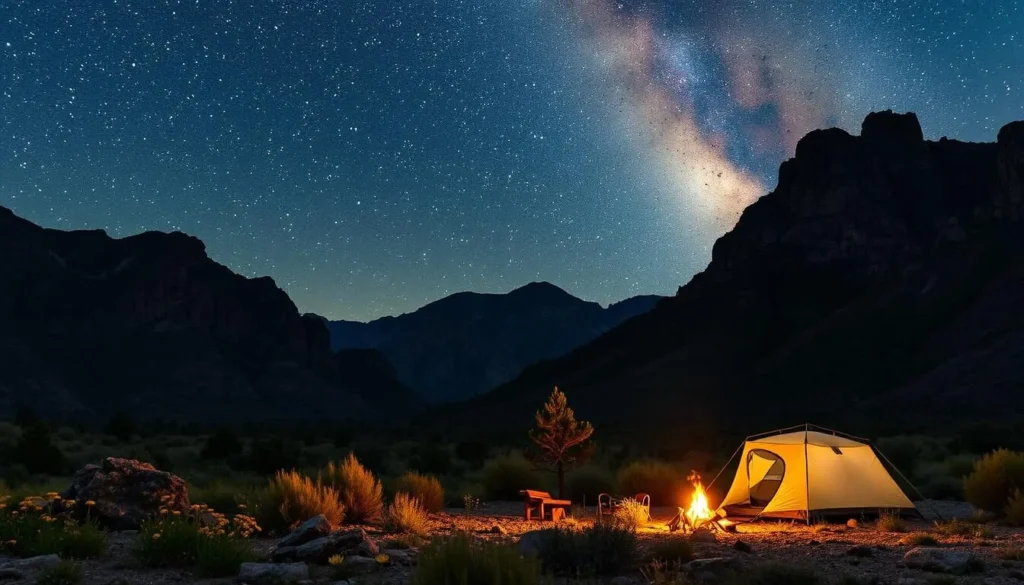
Under the vast Texas sky, Guadalupe Mountains National Park provides an unforgettable camping adventure. With several camping options available, you can choose to immerse yourself in the natural beauty of the park.
Pine Springs Campground
Pine Springs Campground is a convenient and scenic option within the park. It offers restroom facilities and is located near several hiking trails, making it an ideal base for your adventures. The campground is surrounded by the stunning landscapes of the Guadalupe Mountains, offering breathtaking views and a chance to connect with nature.
Dog Canyon Campground
Dog Canyon Campground is another great option, providing a more secluded camping experience. It is also equipped with restroom facilities and is a good starting point for exploring the park’s trails and attractions. The serene environment of Dog Canyon makes it perfect for those seeking a peaceful retreat.
Backcountry Camping and Wilderness Permits
For a true wilderness experience, Guadalupe Mountains National Park offers 10 designated backcountry camping areas accessible only by hiking trails. These areas include locations on Guadalupe Peak, in The Bowl, and on McKittrick Ridge. To camp in these areas, you must obtain a Wilderness Use Permit at the Pine Springs Visitor Center. Be prepared to carry in all your supplies and pack out your trash, as these primitive campsites have no amenities.
Salt Basin Dunes: West Texas’s Hidden White Sands
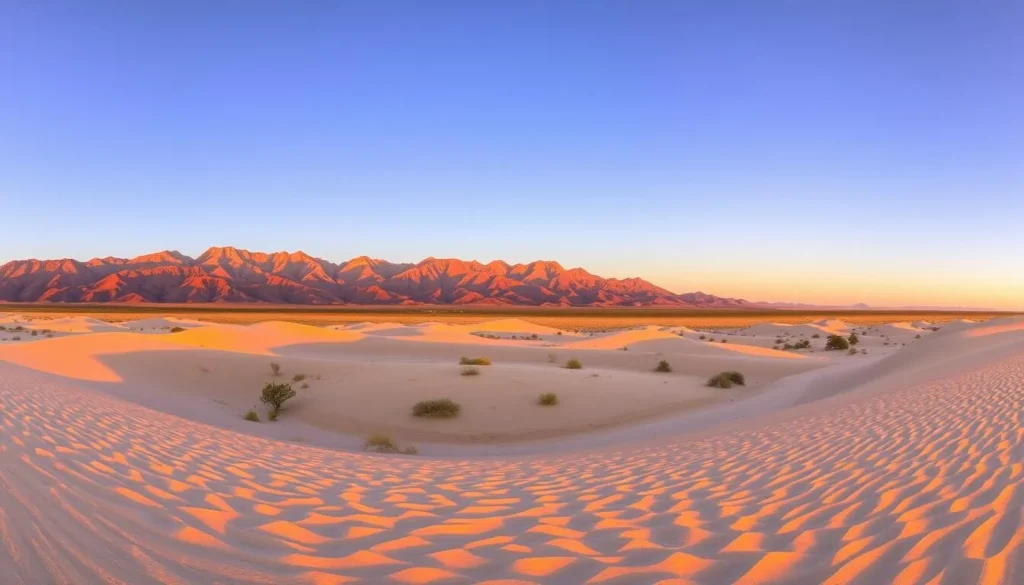
The Salt Basin Dunes, a lesser-known gem within Guadalupe Mountains National Park, beckon with their serene beauty. This unique area features brilliant white gypsum sand formations that, while smaller in scale compared to White Sands National Park, offer a more peaceful experience due to fewer visitors.
Accessing the Dunes
To visit the Salt Basin Dunes, you’ll need to walk just over a mile from the parking area. The trail is flat and sandy, making it accessible for most visitors. However, be sure to bring water, sunblock, and sunglasses, as there’s no shade along the way. It’s also crucial to protect the area by not stepping on the cryptobiotic crust, a vital component of the desert ecosystem.
What to See and Do
The Salt Basin Dunes provide a spectacular photography opportunity, especially during early morning or late afternoon when the sunlight creates dramatic shadows. You’ll enjoy panoramic views of El Capitan and Guadalupe Peak from a unique western perspective. The contrast between the white sand and the distant mountains is breathtaking, making it one of the best things to do in Guadalupe Mountains National Park.
Key Highlights:
- The dunes are covered with plants, and sledding is not allowed to preserve the area.
- Areas of the dunes feature a cryptobiotic crust that should not be disturbed.
- The lower elevation means it’s typically warmer here than in other parts of the park.
- Panoramic views of El Capitan and Guadalupe Peak are available from the dunes.
Historical Attractions: Frijole Ranch and Cultural Museum
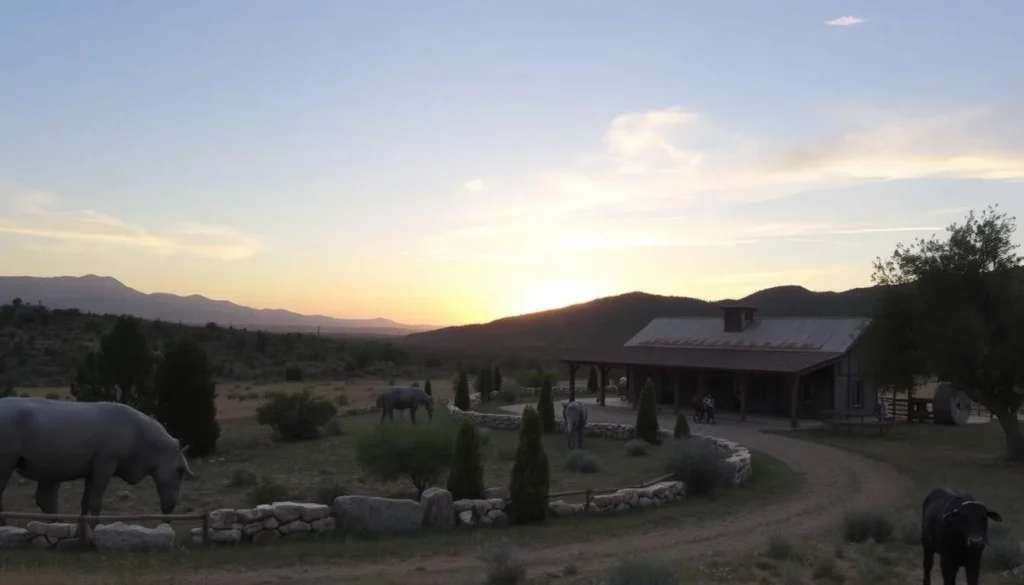
As you explore Guadalupe Mountains National Park, you’ll discover a rich history at Frijole Ranch and its Cultural Museum. The ranch is a significant historical site that provides insight into the lives of early settlers and the development of the area.
Ranch History and Museum Exhibits
The Frijole Ranch house, built in 1876, now serves as a museum showcasing the history of the ranch and the surrounding area. You can explore exhibits featuring artifacts and stories about the ranch’s past, including its role in the region’s ranching history.
Surrounding Historical Sites
Beyond Frijole Ranch, you can explore other historical sites within the park. The ruins of the Pinery Station, a stop on the historic Butterfield Overland Mail route, are accessible via a short trail near the Pine Springs Visitor Center. Additionally, consider visiting nearby Carlsbad Caverns National Park in New Mexico to deepen your understanding of the region’s geological and cultural history.
Off the Beaten Path: Dog Canyon and Williams Ranch
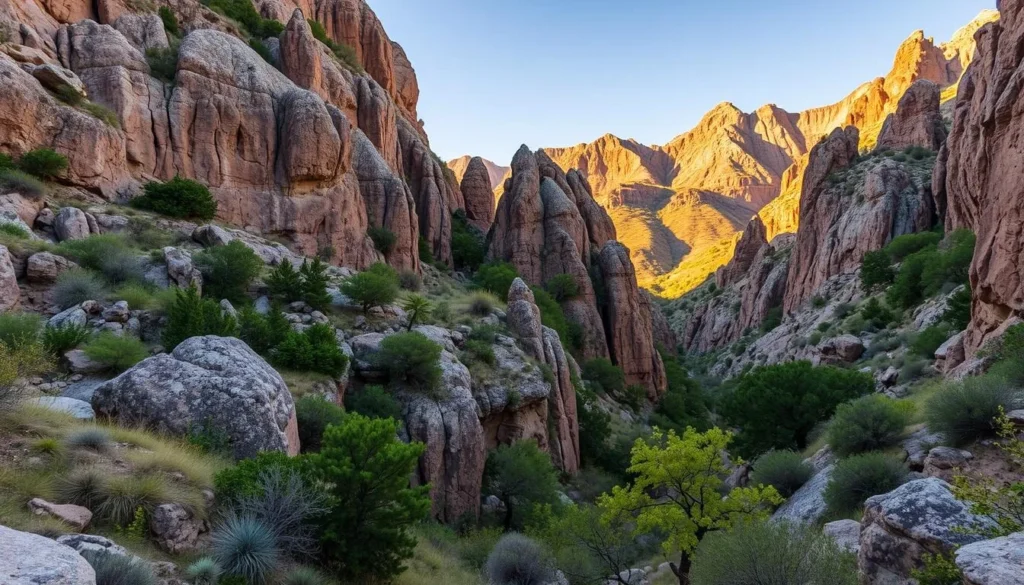
For those seeking adventure beyond the usual trails, Guadalupe Mountains National Park offers two unique destinations: Dog Canyon and Williams Ranch. These areas provide a chance to experience the park’s natural beauty and rich history in a more secluded setting.
Dog Canyon Trails and Attractions
Dog Canyon is a scenic area located on the northern part of the park, near the New Mexico border. It features several trails, including the Dog Canyon Trail, which offers stunning views of the surrounding landscape. Visitors can explore the canyon, take in the scenery, and enjoy the peaceful atmosphere.
Williams Ranch Access and Views
Williams Ranch is a remote ranch located in the southwestern part of the park. To access the ranch, visitors must obtain a gate key from the Pine Springs Visitor Center and drive a challenging 7.3-mile dirt road that requires a high-clearance 4WD vehicle. The journey takes you through some of the most remote terrain in the park, passing through two locked gates that must be secured behind you. Once at the ranch, you’ll be rewarded with spectacular views of El Capitan and Guadalupe Peak from the western perspective, along with the historic ranch house that dates back to the early 20th century.
The area around Williams Ranch contains some of the oldest rock formations in the Guadalupe Mountains, making it geologically significant as well as scenically impressive. The lonely Williams Ranch house stands at the base of a 3,000-foot rock cliff, with Bone Canyon beyond.
Wildlife Viewing and Photography Opportunities
As you explore Guadalupe Mountains National Park, you’ll discover a rich tapestry of wildlife and breathtaking landscapes to capture. The park’s diverse ecosystems support a wide range of wildlife, from majestic deer to various bird species.
Best Spots for Wildlife Sightings
The park offers numerous locations ideal for spotting wildlife. McKittrick Canyon is known for its bigtooth maples and is a great spot for observing deer and various bird species. The Pine Springs area is another hotspot for wildlife viewing.
- McKittrick Canyon: Known for deer and bird watching.
- Pine Springs: Frequently visited by deer and other wildlife.
Photography Tips for Capturing the Landscape
For capturing the park’s stunning landscapes, consider the golden hours around sunrise and sunset for the most dramatic lighting. The Salt Basin Dunes provide a spectacular backdrop, especially during early morning or late afternoon.
| Location | Best Time | Photography Tip |
|---|---|---|
| Salt Basin Dunes | Early morning or late afternoon | Use low-angle sunlight to create dramatic shadows. |
| McKittrick Canyon | Late October to mid-November | Capture fall colors with a polarizing filter. |
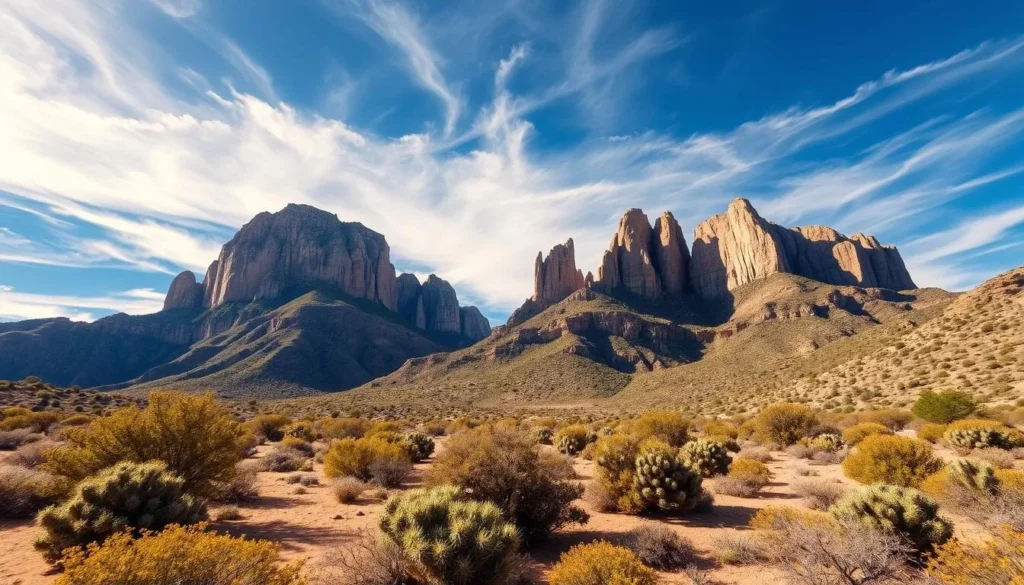
Conclusion: Making the Most of Your Guadalupe Mountains Adventure
The Guadalupe Mountains National Park is a gem in West Texas, offering a range of experiences that cater to different interests and fitness levels. With its diverse landscapes and activities, you’re likely to find something that suits your adventure style.
For a memorable visit, consider hiking to Guadalupe Peak, the highest point in Texas, or exploring the breathtaking McKittrick Canyon. If you have more time, Devil’s Hall Trail and the Salt Basin Dunes are also must-see attractions. The park’s compact size belies its rich diversity, from challenging summit hikes to gentle nature walks and historic sites.
Depending on your time, you can plan your visit accordingly. One day is enough to hike Guadalupe Peak or explore McKittrick Canyon. With two days, you can combine a major hike with a visit to the Salt Basin Dunes or Frijole Ranch. For a more comprehensive experience, consider spending at least three days to explore the remote Dog Canyon area and tackle challenging trails like the Permian Reef Trail.
The above is subject to change.
Check back often to TRAVEL.COM for the latest travel tips and deals.
